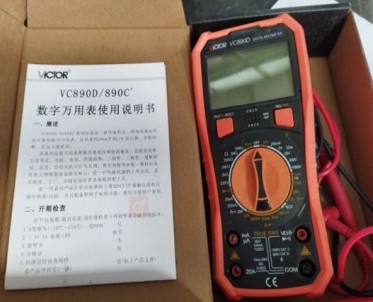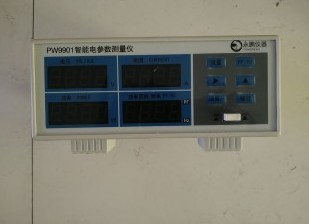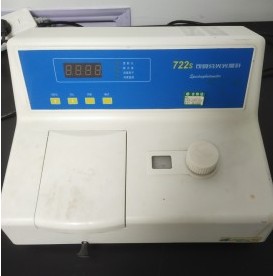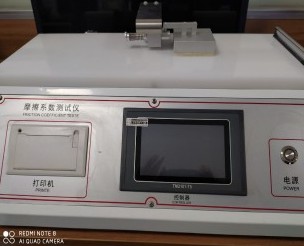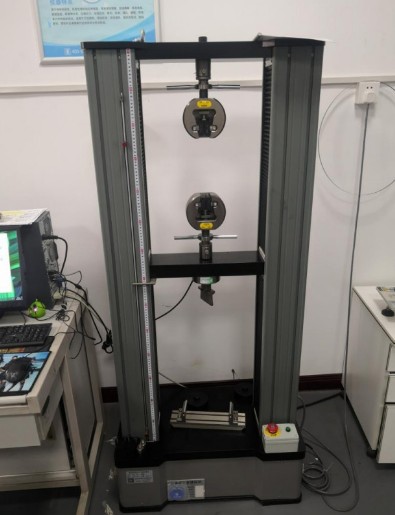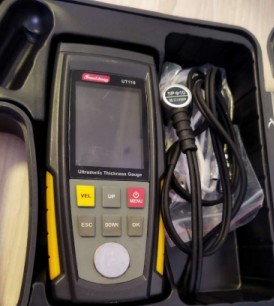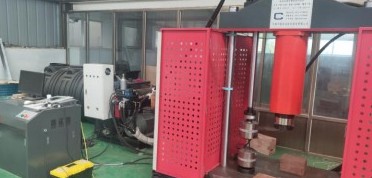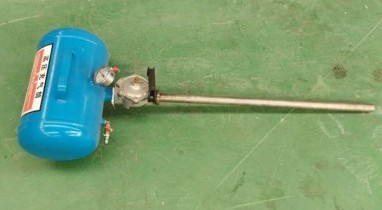抗氧化性检测标准相关信息
GB/T 39100-2020 多肽抗氧化性测定 DPPH和ABTS法
简介:
信息:ICS:07.080 CCS:A40 发布:2020-09-29 00:00:00.0 实施:2021-04-01 00:00:00.0
KS L 1602-2006(2021) 非氧化物细陶瓷抗氧化性试验方法
简介:
信息:ICS:81.060.20 CCS: 发布:2006-05-01 实施:
ISO/TR 13438:1999 土工织物和土工织物相关产品.在高氧气压力下测定抗氧化性的筛选试验方法
简介:
信息:ICS:59.080.70 CCS: 发布:1999-02-25 实施:
GB/T 13244-1991 含碳耐火材料抗氧化性试验方法
简介: 本标准规定了测定含碳耐火材料抗氧化性的原理、设备、试样、程序、结果计算和试验报告。 本标准适用于镁碳砖、铝碳砖抗氧化性的测定。
信息:ICS:81.080 CCS:Q44 发布:1991-11-06 实施:1992-07-01
NF X41-580-2-2006 木材防腐剂.物理化学试验.第2部分:抗氧化性
简介:
信息:ICS:71.100.50 CCS:B71 发布:2006-05-01 实施:2006-05-05
ISO/TR 13438-1999 土工布及相关产品 抗氧化性测定用筛选试验方法
简介:
信息:ICS:59.080.70 CCS:W59 发布:1999-02 实施:
GB/T 32329-2015 氮氧化物材料抗氧化性试验方法 变温氧化法
简介:
信息:ICS: CCS: 发布: 实施:2016-07-01
ASTM F2023-05 评价交联聚乙烯(PEX)管和系统对热氯化水的抗氧化性的标准试验方法
简介:
信息:ICS:23.040.20 CCS: 发布:2005-11-01 实施:
SH/T 0196-1992 润滑油抗氧化安定性测定法
简介:本标准规定了润滑油抗氧化安定性测定方法。本标准适用于润滑油。
信息:ICS: CCS:E34 发布:1992-01-01 实施:1992-05-20
ASTM C863-00(2022) 评估高温下碳化硅耐火材料抗氧化性的标准试验方法
简介:
信息:ICS:81.080 CCS: 发布:2022-11-01 实施:
DIN EN 14575-2005 土工合成阻挡层.测定抗氧化性用屏蔽法
简介:This document specifies a test method for sreening the resistance of polyethylene and polypropylene polymeric and bituminous geosynthetic barriers to oxidation.
信息:ICS:59.080.70;91.100.50 CCS:W59 发布:2005-07 实施:
HB 5258-1983 钢及高温合金的抗氧化性测定试验方法
简介:本标准规定了钢及高温合金的抗氧化性测定方法。 本方法亦可用于高温合金与各种高温防护层的抗氧化性对比试验。
信息:ICS: CCS:H40 发布:1983-07-25 实施:1984-01-01
ASTM F2023-21 评价交联聚乙烯(PEX)管、管和系统对热氯化水的抗氧化性的标准试验方法
简介:
信息:ICS:23.040.20 CCS: 发布:2021-12-15 实施:
EN 14575-2005 土工合成阻挡层.测定抗氧化性用屏蔽法
简介:This document specifies a test method for screeningThe resistance of polyethylene and polypropylene polymeric and bituminous geosynthetic barriers to oxidation.The data are suitable for screening but not for deriving performance data such as lifetimes greater than 25 years, unless supported by further evidence.
信息:ICS:59.080.70;91.100.50 CCS: 发布:2005-04-01 实施:
CSN 77 0123-1980 油脂食品抗氧化防护性包装
简介:Zpracovatel a Oborové normaliza?ní st?edisko: Institut manipula?ních, dopravních, obalov?ch a skladovacích systém?, Praha — Ing. A. Fuchsová, Ing. B. RyantPracovník ??adu pro normalizaci a mě?ení: Ing. Jar. Novák
信息:ICS: CCS: 发布:1980-5-27 实施:
ASTM F3497-21 评估聚丙烯(PP)管道系统对热氯化水的抗氧化性的标准试验方法
简介:
信息:ICS: CCS: 发布:2021-12-15 实施:
DIN EN ISO 4263-1-2005 石油及相关产品.抗氧化油和液体老化性的测定.TOST试验.第1部分:矿物油测定规程
简介:The project specifies a method for the determination of the ageing behavoiur of mineral oils with the TOST test.
信息:ICS:75.120 CCS:E30 发布:2005-03 实施:
DIN 51808-1978 润滑剂检验.润滑剂抗氧化性的测定.氧气法
简介:Testing of lubricants; determination of oxidation stability of greases; oxygen methodEssais des lubrifiants; détermination de la stabilité à l'oxydation des graisses lubrifiantes; méthode à l'oxygèneDie vorliegende Norm wurde gegenüber der Ausgabe Augus
信息:ICS:75.100 CCS:E30 发布:1978-01 实施:
JC/T 2530-2019 非氧化物精细陶瓷抗氧化性测试方法
简介:
信息:ICS:ICS 81.060.30 CCS:Q32 发布:2019-05-02 实施:2019-11-01
BS EN ISO 4263-1-2004 石油和相关产品.抗氧化油和流体的老化性测定.TOST试验.矿物油规程
简介:This part of ISO 4263 specifies a method for the determination of the ageing behaviour of rust- and oxidation-inhibited mineral oils having a density less than that of water, used as turbine oils (categories TSA, TGA, TSE, TGE of ISO 6743-5, see [4] in the Bibliography), hydraulic oils (categories HL, HM, HR, HV, HG of ISO 6743-4, see [3] in the Bibliography), and circulating oils (category CKB of ISO 6743-6, see [5] in the Bibliography). Oils containing synthetic components can be tested by this procedure, but no precision statement is available yet for such fluids. NOTE 1 For the purposes of this part of ISO 4263, the term "% (m/m)" is used to represent the mass fraction of a material. NOTE 2 Other signs of oil deterioration, such as the formation of insoluble sludge, catalyst coil corrosion or decrease in pH value, may occur, which indicate oxidation of the oil, but are not reflected in the calculated oxidation lifetime. The correlation of these occurrences with field service is under investigation. This test method is widely used in specifications and is considered of value in comparing the oxidation stability of oils that are prone to contamination with water. However, because of the large number of individual field-service applications, the correlation between the results of this test and actual service performance can vary markedly, and is best judged on experience. The precision of this part of ISO 4263 for oxidation life was only determined on inhibited turbine oils, and applies to oxidation lives of 700 h to 3 900 h.
信息:ICS:75.120 CCS:E30 发布:2005-01-25 实施:2005-01-25
HB 5258-2000 钢及高温合金的抗氧化性测定试验方法
简介:本标准规定了航空用钢、高温合金及高温防护涂层的抗氧化性测定的试验设备及仪器、试验方法及试验条件和试验结果的评定等。 本标准适用于航空用钢、高温合金及高温防护涂层的抗氧化性测定,亦可用于高温合金与各种高温防护涂层的抗氧化性对比试验。钛合金的抗氧化性测定亦可参照本标准进行。
信息:ICS: CCS:H25 发布: 实施:
JC/T 2530-2019 非氧化物精细陶瓷抗氧化性测试方法
简介:
信息:ICS:ICS 81.060.30 CCS:Q32 发布:2019-05-02 实施:2019-11-01
BS EN ISO 13438-2004 土工织物和相关产品.抗氧化性测定的筛选试验方法
简介:ISO 13438:2004 specifies a screening test method for determining the resistance of geotextiles and geotextile-related products to oxidation. The test is applicable to polypropylene- and polyethylene-based products.The data are suitable for screening purposes but not for deriving performance data such as lifetime unless supported by further evidence.
信息:ICS:59.080.70 CCS:W59 发布:2004-12-15 实施:2004-12-15
BS EN ISO 6886-2016 动物和植物脂肪和油脂.抗氧化性的测定(加速氧化试验)
简介:
信息:ICS:67.200.10 CCS:X14 发布:2016-03-31 实施:2016-03-31
ISO 13438:2004 土工布和土工布相关产品——测定抗氧化性的筛选试验方法
简介:
信息:ICS:59.080.70 CCS: 发布:2004-10-29 实施:
ASTM F2023-2015 评估热氯化水用交联聚乙烯 (PEX) 管, 管件和系统抗氧化性的标准试验方法
简介: 5.1x00a0;Environment or oxidative time-to-fail data derived from this test method, analyzed in accordance with Section 13, are suitable for extrapolation to typical end-use temperatures and hoop stresses. The extrapolated value(s) provides a relative indication of the resistance of the tested PEX pipe or tubing or system to the oxidative effects of hot, chlorinated water for conditions equivalent to those conditions under which the test data were obtained. The performance of a material or piping product under actual conditions of installation and use is dependent upon a number of factors including installation methods, use patterns, water quality, nature and magnitude of localized stresses, and other variables of an actual, operating hot-and-cold water distribution system that are not addressed in this test method. As such, the extrapolated values do not constitute a representation that a PEX tube or system with a given extrapolated time-to-failure value will perform for that period of time under actual use conditions. 1.1x00a0;This test method describes the general requirements for evaluating the long-term, chlorinated water, oxidative resistance of cross-linked polyethylene (PEX) pipe or tubing produced in accordance with PEX specifications, such as Specification F876 or Specification F2788/F2788M by exposure to hot, chlorinated water. This test method outlines the requirements of a pressurized flow-through test system, typical test pressures, test-fluid characteristics, failure type, and data analysis. Note 1:x00a0;Other known disinfecting systems (chlorine dioxide, ozone, and chloramines) are also used for protection of potable water. Free-chlorine is the most common disinfectant in use today. A PPI research project examined the relative aggressiveness of free chlorine and chloramines on PEX pipes, both at the same 4.0 ppm concentration and the same test temperatures. The results of the testing showed pipe failure times approximately 40% longer when tested with chloramines compared to testing with free chlorine, at the tested conditions. Based on these results, the data suggests that chloramines are less aggressive than free chlorine to PEX pipes. 1.2x00a0;Guidelines and requirements for test temperatures, test hoop stresses, and other test criteria have been established by prior testing of PEX pipe or tubing produced by the three most common commercial methods of cross-linking: silane, peroxide, and electron-beam (see Note 2). Other related system components that typically appear in a PEX hot-and-cold water distribution system can be evaluated with the PEX pipe or tubing. When testing PEX pipe or tubing and fittings as a system, it is recommended that the anticipated end-use fitting type(s) and material(s) be included in the test circuit since it is known that some fitting types and materials can impact failure times. Specimens used shall be representative of the piping product(s) and material(s) under investigation. Note 2:x00a0;The procedures described in this test method (with some modifications of test temperatures or stresses, or both) have been used to evaluate pipes manufactured from polybutylene (PB), polyethylene (PE), polypropylene (PP), multilayer (polymer-metal composite), ......
信息:ICS:83.140.30 ; 23.040.20 CCS: 发布:2015 实施:
ASTM F2023-04 评价交联聚乙烯(PEX)管和系统对热氯化水的抗氧化性的标准试验方法
简介:
信息:ICS:23.040.20 CCS: 发布:2004-04-01 实施:
ASTM F2263-2014 氯化水聚乙烯 (PE) 管的抗氧化性评估的标准试验方法
简介: 5.1x00a0;Environment or oxidative time-to-fail data derived from this test method, analyzed in accordance with Section 13, are suitable for extrapolation to typical end-use temperatures and hoop stresses. The extrapolated value(s) provides a relative indication of the resistance of the tested PE pipe or system to the oxidative effects of chlorinated water for conditions equivalent to those conditions under which the test data were obtained. The performance of a material or piping product under actual conditions of installation and use is dependent upon a number of factors including installation methods, use patterns, water quality, nature and magnitude of localized stresses, and other variables of an actual, operating cold water supply or service system that are not addressed in this test method. As such, the extrapolated values do not constitute a representation that a PE pipe or system with a given extrapolated time-to-failure value will perform for that period of time under actual use conditions. 5.2x00a0;This test method has been generally used for evaluating oxidatively induced Stage II or Stage III failure data. 1.1x00a0;This test method describes the general requirements for evaluating the long-term, chlorinated water, oxidative resistance of polyethylene (PE), used in cold water supply or service systems by exposure to chlorinated water. This test method outlines the requirements of a pressurized flow-through test system, typical test pressures, test-fluid characteristics, failure type, and data analysis. Note 1:x00a0;Other known disinfecting systems (chlorine dioxide, ozone, and chloramine) are currently used for protection of potable water; however, free-chlorine is by far the most common system in use today. Disinfecting systems other than chlorine have not been evaluated by this method. 1.2x00a0;Guidelines and requirements for test temperatures, test hoop stresses, and other test criteria have been established by prior testing of PE pipe. Other related system components that typically appear in a PE cold water supply or service system can be evaluated with the PE pipe. When testing PE pipe and fittings as a system, it is recommended that the anticipated end-use fitting type(s) and material(s) be included in the test circuit since it is known that some fitting types and materials can impact failure times. Specimens used shall be representative of the piping product(s) and material(s) under investigation. Note 2:x00a0;The procedures described in this test method (with some modifications of test temperatures or stresses, or both) have been used to evaluate pipes manufactured from polybutylene (PB), crosslinked polyethylene (PEX), polypropylene (PP), multilayer (polymer-metal composite), copper, and stainless steel. 1.3x00a0;This test method is applicable to PE pipe and systems used for transport of potable water containing free-chlorine for disinfecting purposes. The oxidizing potential of the test-fluid specified in this test method exceeds that typically found in potable water systems across the United States.
信息:ICS:23.040.20 (Plastic pipes) CCS: 发布:2014 实施:
EN ISO 4263-1-2004 石油及相关产品.抗氧化油和液体老化性的测定.TOST试验.第1部分:矿物油测定规程 ISO 4263-1-2003
简介:
信息:ICS:75.120 CCS: 发布:2004 实施:
ASTM F2023-13 评价交联聚乙烯(PEX)管和系统对热氯化水的抗氧化性的标准试验方法
简介:
信息:ICS:23.040.20 CCS: 发布:2013-11-01 实施:
ISO 20509:2003 精细陶瓷(高级陶瓷、高级工业陶瓷)——非氧化物单片陶瓷抗氧化性的测定
简介:
信息:ICS:81.060.30 CCS: 发布:2003-12-05 实施:
ANSI/ASTM F2023-2013 评价热氯水用交联聚乙烯(PEX)管和系统抗氧化性的试验方法
简介:
信息:ICS:23.040.20 CCS:G33 发布:2013-01-01 实施:
ISO 20509-2003 细陶瓷(高级陶瓷、高级工业陶瓷).非氧化块体陶瓷的抗氧化性测定
简介:This International Standard describes the method of test for determining the oxidation resistance of non-oxide monolithic ceramics, such as silicon nitride, Sialon and silicon carbide at high temperatures. This International Standard is intended to provide an assessment of the mass and dimensional changes of test pieces following oxidation at high temperature in an oxidizing atmosphere, and to assess whether oxidation has a significant effect on the subsequent strength. This test method may be used for materials development, quality control, characterization, and design data generation purposes.note: 1) Sometimes written SiAION is the acronym for a ceramic that contains silicon, aluminium, oxygen and nitrogen.
信息:ICS:81.060.30 CCS:Q32 发布:2003-12 实施:
ASTM F2023-10 评价交联聚乙烯(PEX)管和系统对热氯化水的抗氧化性的标准试验方法
简介:
信息:ICS:23.040.20 CCS: 发布:2010-08-01 实施:
ASTM F2023-03e1 评价交联聚乙烯(PEX)管和系统对热氯化水的抗氧化性的标准试验方法
简介:
信息:ICS:23.040.20 CCS: 发布:2003-02-10 实施:
ASTM F2023-09 评价交联聚乙烯(PEX)管和系统对热氯化水的抗氧化性的标准试验方法
简介:
信息:ICS:23.040.20 CCS: 发布:2009-12-01 实施:
ASTM F2023-03 评价交联聚乙烯(PEX)管和系统对热氯化水的抗氧化性的标准试验方法
简介:
信息:ICS:83.140.30 CCS: 发布:2003-02-10 实施:
ASTM F2023-08 评价交联聚乙烯(PEX)管和系统对热氯化水的抗氧化性的标准试验方法
简介:
信息:ICS:23.040.20 CCS: 发布:2008-03-01 实施:
ASTM F2023-00 评价交联聚乙烯(PEX)管和系统对热氯化水的抗氧化性的标准试验方法
简介:
信息:ICS:23.040.20 CCS: 发布:2000-06-10 实施:
GOST R 53160-2008 动物和植物的脂肪和油.抗氧化性的测定(加速氧化试验)
简介:
信息:ICS:67.200.10 CCS:X14 发布:2008 实施:2010-01-01
ASTM C863-2000 高温时评定碳化硅耐火材料抗氧化性的标准试验方法
简介:1.1 This test method covers the evaluation of the oxidation resistance of silicon carbide refractories at elevated temperatures in an atmosphere of steam. The steam is used to accelerate the test. Oxidation resistance is the ability of the silicon carbide (SiC) in the refractory to resist conversion to silicon dioxide (SiO 2 ) and its attendant crystalline growth. 1.2 This standard does not purport to address all of the safety problems, if any, associated with its use. It is the responsibility of the user of this standard to establish appropriate safety and health practices and determine the applicability of regulatory limitations prior to use.
信息:ICS:81.080 (Refractories) CCS:Q40 发布:2000 实施:
ANSI/ASTM F2263-2007 氯化水聚乙烯(PE)管的抗氧化性评估用试验方法
简介:This test method describes the general requirements for evaluating the long-term, chlorinated water, oxidative resistance of polyethylene (PE), used in cold water supply or service systems by exposure to chlorinated water. This test method outlines the requirements of a pressurized flow-through test system, typical test pressures, test-fluid characteristics, failure type, and data analysis. Note 1Other known disinfecting systems (chlorine dioxide, ozone, and chloramine) are currently used for protection of potable water; however, free-chlorine is by far the most common system in use today. Disinfecting systems other than chlorine have not been evaluated by this method.Guidelines and requirements for test temperatures, test hoop stresses, and other test criteria have been established by prior testing of PE pipe. Other related system components that typically appear in a PE cold water supply or service system can be evaluated with the PE pipe. When testing PE pipe and fittings as a system, it is recommended that the anticipated end-use fitting type(s) and material(s) be included in the test circuit since it is known that some fitting types and materials can impact failure times. Specimens used shall be representative of the piping product(s) and material(s) under investigation. Note 2The procedures described in this test method (with some modifications of test temperatures or stresses, or both) have been used to evaluate pipes manufactured from polybutylene (PB), crosslinked polyethylene (PEX), polypropylene (PP), multilayer (polymer-metal composite), copper, and stainless steel. This test method is applicable to PE pipe and systems used for transport of potable water containing free-chlorine for disinfecting purposes. The oxidizing potential of the test-fluid specified in this test method exceeds that typically found in potable water systems across the United States. The values stated in inch-pound units are to be regarded as standard. The values given in parentheses are for information only and are not considered standard. The following precautionary caveat pertains only to the test method portion, Section , of this specification.This standard does not purport to address all of the safety concerns, if any, associated with its use. It is the responsibility of the user of this standard to establish appropriate safety and health practices and determine the applicability of regulatory limitations prior to use.
信息:ICS:23.040.20 CCS:G33 发布:2007-03-20 实施:
ASTM C863-2000(2010) 高温时评定碳化硅耐火材料抗氧化性的标准试验方法
简介:The oxidation of silicon carbide refractories at elevated temperatures is an important consideration in the application of these refractories. The product of oxidation is amorphous silica or cristobalite, depending upon the temperature at which oxidation takes place. This oxide formation is associated with expansion and degradation of strength. The quantity of water vapor in the atmosphere greatly affects the rate of oxidation. The test, which creates and measures the expansion, is suitable for guidance in product development and relative comparison in application work where oxidation potential is of concern. The variability of the test is such that it is not recommended for use as a referee test. 1.1 This test method covers the evaluation of the oxidation resistance of silicon carbide refractories at elevated temperatures in an atmosphere of steam. The steam is used to accelerate the test. Oxidation resistance is the ability of the silicon carbide (SiC) in the refractory to resist conversion to silicon dioxide (SiO2) and its attendant crystalline growth. 1.2 This standard does not purport to address all of the safety concerns, if any, associated with its use. It is the responsibility of the user of this standard to establish appropriate safety and health practices and determine the applicability of regulatory limitations prior to use.
信息:ICS:81.080 CCS:Q41 发布:2000 实施:
BS EN ISO 6886-2008 动物和植物脂肪和油脂.抗氧化性的测定(加速氧化试验)
简介:This International Standard specifies a method for the determination of the oxidative stability of fats and oils under extreme conditions that induce rapid oxidation: high temperature and high air flow. It does not allow determination of the stability of fats and oils at ambient temperatures, but it does allow a comparison of the efficacy of antioxidants added to fats and oils.The method is applicable to both virgin and refined animal and vegetable fats and oils.
信息:ICS:67.200.10 CCS:X14 发布:2006-11-30 实施:2006-11-30
ASTM C863-2000(2016) 评估高温碳化硅耐火材料抗氧化性的标准试验方法
简介: 3.1x00a0;The oxidation of silicon carbide refractories at elevated temperatures is an important consideration in the application of these refractories. The product of oxidation is amorphous silica or cristobalite, depending upon the temperature at which oxidation takes place. This oxide formation is associated with expansion and degradation of strength. The quantity of water vapor in the atmosphere greatly affects the rate of oxidation. 3.2x00a0;The test, which creates and measures the expansion, is suitable for guidance in product development and relative comparison in application work where oxidation potential is of concern. The variability of the test is such that it is not recommended for use as a referee test. 1.1x00a0;This test method covers the evaluation of the oxidation resistance of silicon carbide refractories at elevated temperatures in an atmosphere of steam. The steam is used to accelerate the test. Oxidation resistance is the ability of the silicon carbide (SiC) in the refractory to resist conversion to silicon dioxide (SiO2) and its attendant crystalline growth. 1.2x00a0;This standard does not purport to address all of the safety concerns, if any, associated with its use. It is the responsibility of the user of this standard to establish appropriate safety and health practices and determine the applicability of regulatory limitations prior to use.
信息:ICS:81.080 CCS: 发布:2000 实施:
NF X41-580-2-2006 木材防腐剂.物理化学试验.第2部分:抗氧化性
简介:
信息:ICS:71.100.50 CCS:B71 发布:2006-05-01 实施:2006-05-05
ASTM C863-2000(2005) 高温时评定碳化硅耐火材料抗氧化性的标准试验方法
简介:The oxidation of silicon carbide refractories at elevated temperatures is an important consideration in the application of these refractories. The product of oxidation is amorphous silica or cristobalite, depending upon the temperature at which oxidation takes place. This oxide formation is associated with expansion and degradation of strength. The quantity of water vapor in the atmosphere greatly affects the rate of oxidation. The test, which creates and measures the expansion, is suitable for guidance in product development and relative comparison in application work where oxidation potential is of concern. The variability of the test is such that it is not recommended for use as a referee test. 1.1 This test method covers the evaluation of the oxidation resistance of silicon carbide refractories at elevated temperatures in an atmosphere of steam. The steam is used to accelerate the test. Oxidation resistance is the ability of the silicon carbide (SiC) in the refractory to resist conversion to silicon dioxide (SiO2) and its attendant crystalline growth.1.2 This standard does not purport to address all of the safety concerns, if any, associated with its use. It is the responsibility of the user of this standard to establish appropriate safety and health practices and determine the applicability of regulatory limitations prior to use.
信息:ICS: CCS:Q40 发布:2000 实施:
北检院部分仪器展示




 北检(北京)检测技术研究院(简称:北检院),依托科研测试与材料检测重点领域,结合“211工程”和“985工程”建设,面向学校和社会企业开放的仪器共享机构和跨学科检测交叉融合平台。面向企业及科研单位跨学科研究、面向社会公共服务,构建具有装备优势、人才优势和服务优势的综合科研检测服务平台。
了解更多 +
北检(北京)检测技术研究院(简称:北检院),依托科研测试与材料检测重点领域,结合“211工程”和“985工程”建设,面向学校和社会企业开放的仪器共享机构和跨学科检测交叉融合平台。面向企业及科研单位跨学科研究、面向社会公共服务,构建具有装备优势、人才优势和服务优势的综合科研检测服务平台。
了解更多 +
